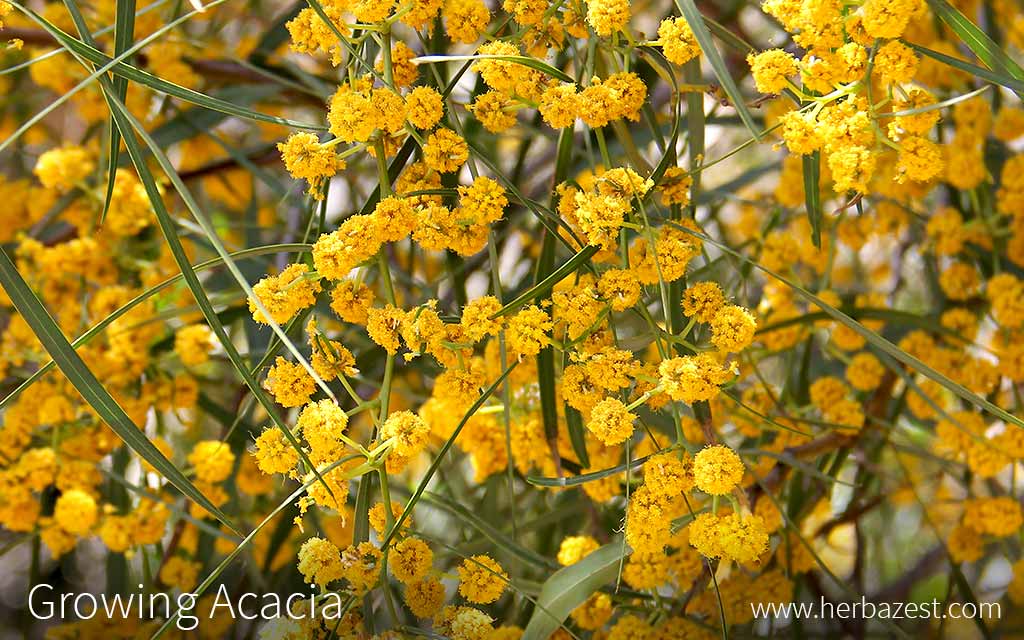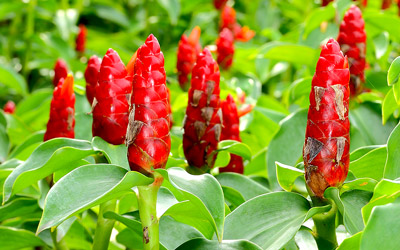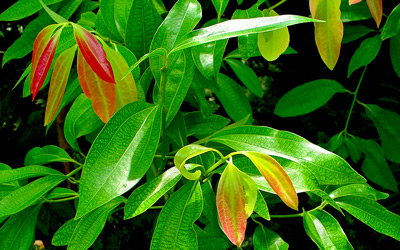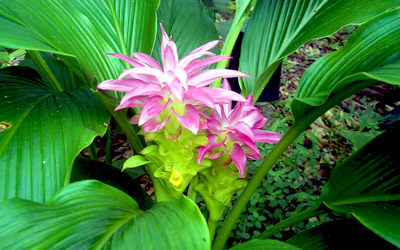Acacia species are ornamental and easy to grow. Varieties range in size from small shrubs to large forest trees that can grow as high as 80 feet (24 m), so care needs to be taken in selecting the right variety. The following growing guidelines will help you cultivate and enjoy the beauty and health benefits of acacia.
1. Preparing the Soil
Acacia trees require well-drained soil, as the roots are delicate and susceptible to excess water. Like other legumes, acacias form symbiotic relationships with soil bacteria to fix atmospheric nitrogen, making them suitable for poor-quality sites. This is why they grow well in both arable fields and wastelands.
However, plowing the area before planting the trees will provide optimal rooting conditions and favor healthy development. Wherever they are located, acacias will need to receive full sun to thrive.
2. Planting
Planting Acacia Outdoors
Regardless of their size, all acacia species display a vigorous growth in cultivation and should be planted in early spring, after the last frost has passed. Since some acacias are more frost-tolerant than others, the local hardiness zone should be considered before planting.
For best results, space acacias out according to the width the variety will reach at maturity. For example, one of the most popular varieties used for landscaping in southern and central Florida is Acacia farnesiana. It grows to a maximum spread of 30 feet (9 m). Therefore, the next tree should be planted at least 30 feet (9 m) apart.
When transplanting, each plant hole should be dug twice the depth of the pot. Thoroughly soak the hole with water before transplanting the acacia. Weekly watering is required until the new plant is fully established. It will take at least a year for a tree to become properly rooted in the soil.
Once the plant is established, follow normal watering, pruning, and weeding guidelines to encourage the best growth patterns. Acacias grow moderately quickly at five to seven feet (1.5 - 2.0 m) in just three to four years.
Planting Acacia Indoors
The cultivation of acacia can done by seeding, grafting, or cutting. Acacia seed coats are hard and impervious to water; therefore, they require scarification or heat treatment to promote germination before sowing.
To heat treat seeds, boil the acacia seeds in water for up to 10 minutes. For scarification, carefully scratch the outer coat with sandpaper. After either process, let the seeds to soak in water for at least 24 hours. Afterwards, the acacia seeds should be swollen and ready to sow.
Place the seeds in a soft, moist medium (such as moss or wet tissue) until sprouts develop. After a couple of weeks, they can be transplanted into pots with moist seed mix. Never allow the roots to dry out.
In the initial stages, acacias seedlings should receive no more than six hours of light per day. Smaller acacia species may be permanently grown indoors in larger pots. Otherwise, potted plants can be transplanted outside during the following growing season. At that time, normal watering and spacing guidelines apply.
3. Plant Care
Watering
Though acacias are capable of withstanding dry conditions, extended periods of drought will adversely affect the species' growth, especially as a young tree or shrub. Conversely, overwatering Acacia spp. could lead to detrimental repercussions in the growing stages, including root rot.
Acacias survive best with deep, infrequent irrigation every one to two weeks. Once the tree is established, less water is needed, but irrigation of some sort is still important. Do not wait until a tree wilts or shows signs of water shortage before irrigating it.
Fertilizing
Acacias respond well to a small amount of nitrogen fertilizer. However, it should not be added into the soil when initially planting the germinated seeds in pots or when planting the acacia outside.
Pruning
It is important to prune acacia varieties to promote growth into well-shaped, mature trees. Some species may also be trained into multi-stemmed bushes.
It is best to prune established mature species minimally, removing dead, diseased, or damaged growth, as well as misplaced branches. Young plants may need more care to establish an attractive shape.
Do all pruning in mid-spring once the risk of frost has passed. This usually occurs around the month of April.
Weed Control
The roots of young acacia trees are very delicate. In order to prevent and inhibit the growth of invasive weeds, hand-weed, hoe, or mulch around the acacia shrubs or trees as appropriate. Do not allow lawn to grow within a foot or two of trunks.
Depending on growing preferences, spraying herbicides may also be helpful, but it should not be necessary.
4. Pest & Disease Control
Pests and diseases can drastically reduce the yield of harvested parts of the acacia tree or shrub. Visual inspection of seed samples for the presence of pests may be combined with other quality control measures. In all matters, learning how to protect acacias is an essential part of growing them.
Pests
Mites and psyllids are of moderate importance as pests to Acacia spp., as they are threats to the trees' buds, shoots, flowers, leaves, and pods.
Acacia mites and psyllids can be prevented by removing and destroying the infested parts; bud and graft material may contain mites as well and need to be treated chemically with insecticides.
Other common Acacia spp. pests include phyllode spotting mirid bugs and macadamia nutborers. To get rid of them, it is necessary to follow the above procedure.
5. Harvest
The main part of the acacia tree that is harvested is the sap from the bark, which known as gum arabic or acacia gum. This gum is generally harvested from Acacia senegal, since the species is praised for having superior properties.
A. senegal trees have to be under hydric stress before they produce gum. Having said this, it is important to decide the purpose of growing an acacia tree beforehand in order to provide the necessary conditions for gum harvesting or ornamental value.
The flowers of acacia are also collected to obtain a scented oil commonly used in perfumes. Most species of acacia are evergreen, but flowers bloom from November through February.
6. Storage
Acacia gum should be stored in a clean, cool, dry place. It does not deteriorate in storage as long as it is under favorable conditions. It will become hardened and darkened in color if wet.
This gum is soluble in water and foods, and it is often used as an emulsifier, stabilizer, and thickener. It is used in the confectionery industry for candies, jellies, glazes, and chewing gum. It has also been used as a stabilizer in soft drinks and beers. Acacia gum is also used by herbalists in the preparation of ointments.
Acacia flowers and foliage may be arranged and then left to dry naturally for later use in teas and other medicinal preparations.
From planting to harvesting, every growth stage of this woody legume is its own learning experience. With the correct conditions, growing acacia can be a reward for those who take the time for its upkeep and care.





